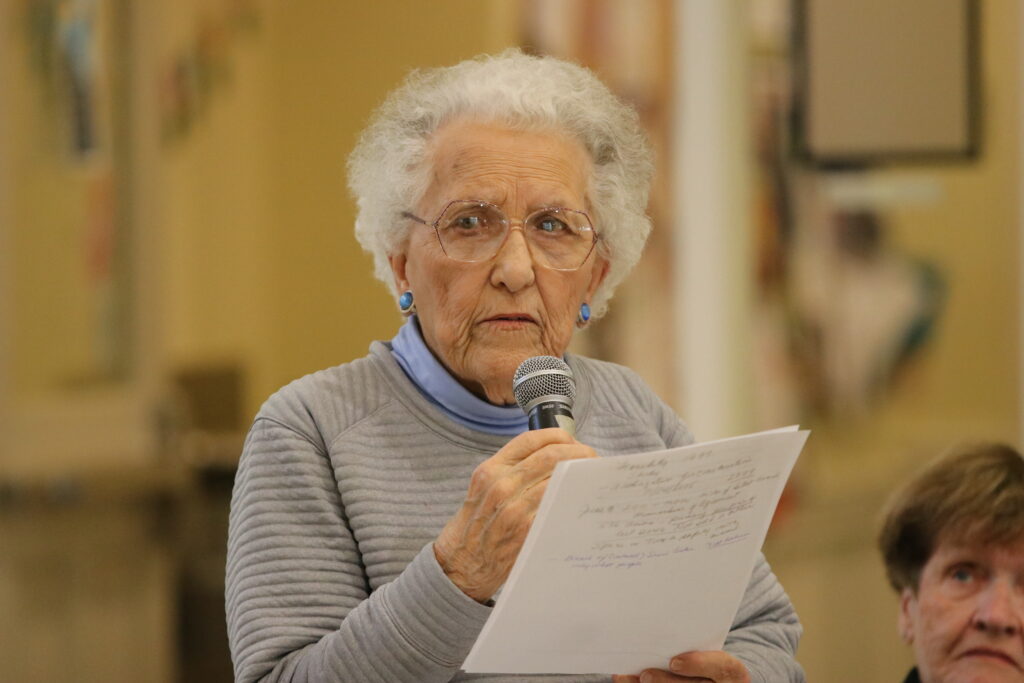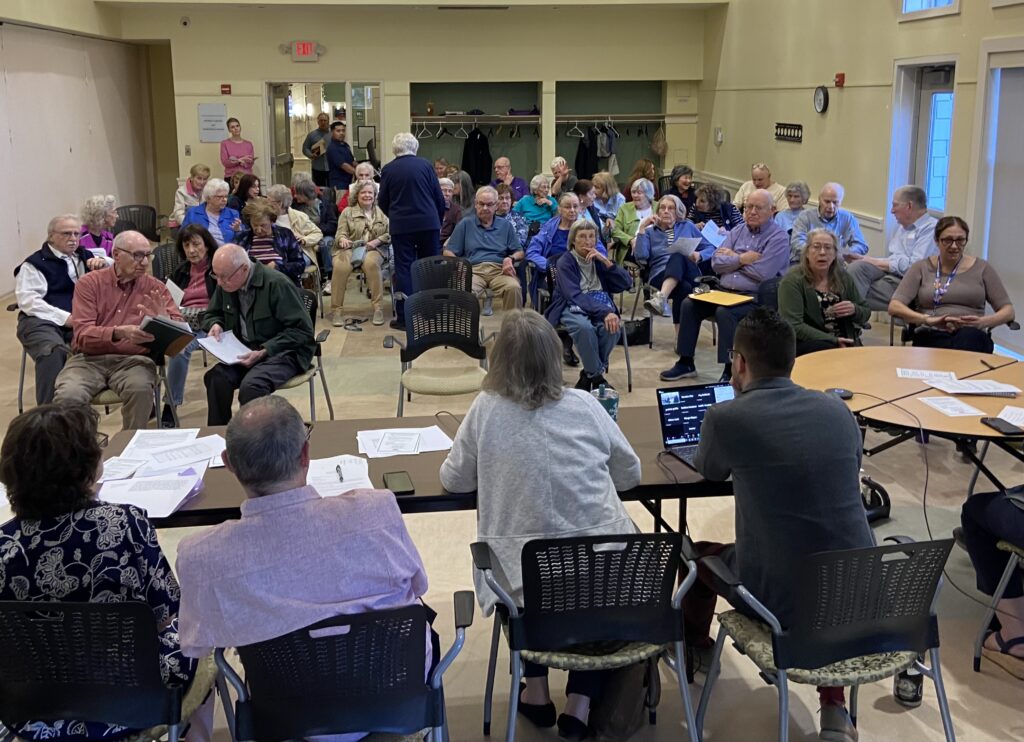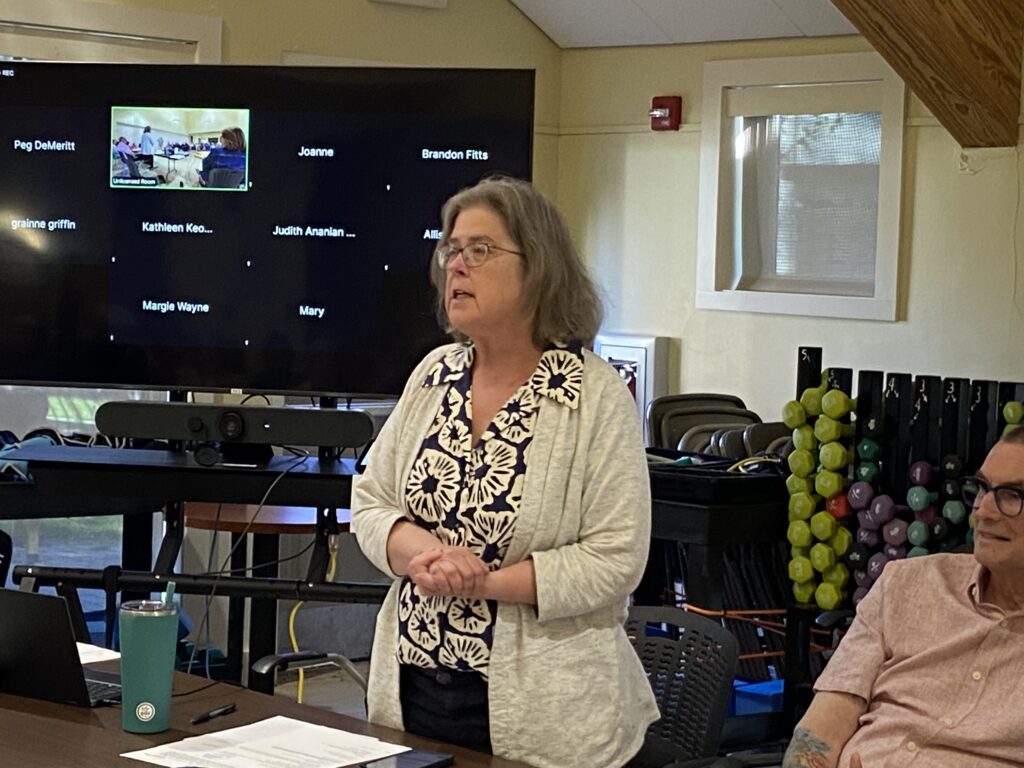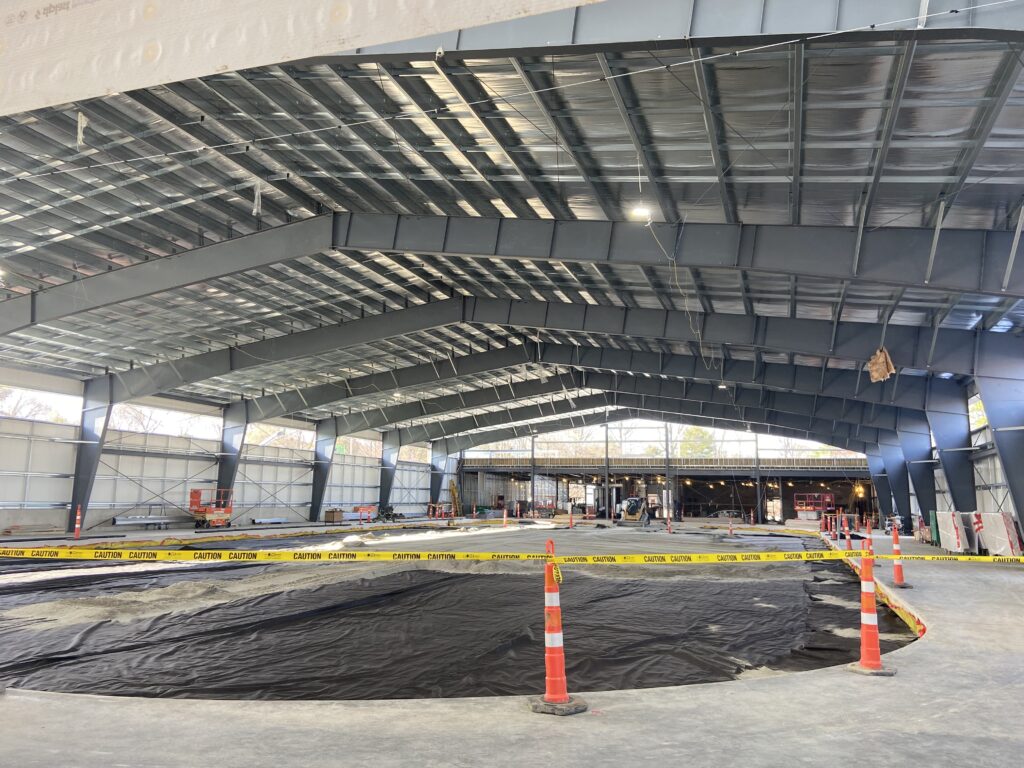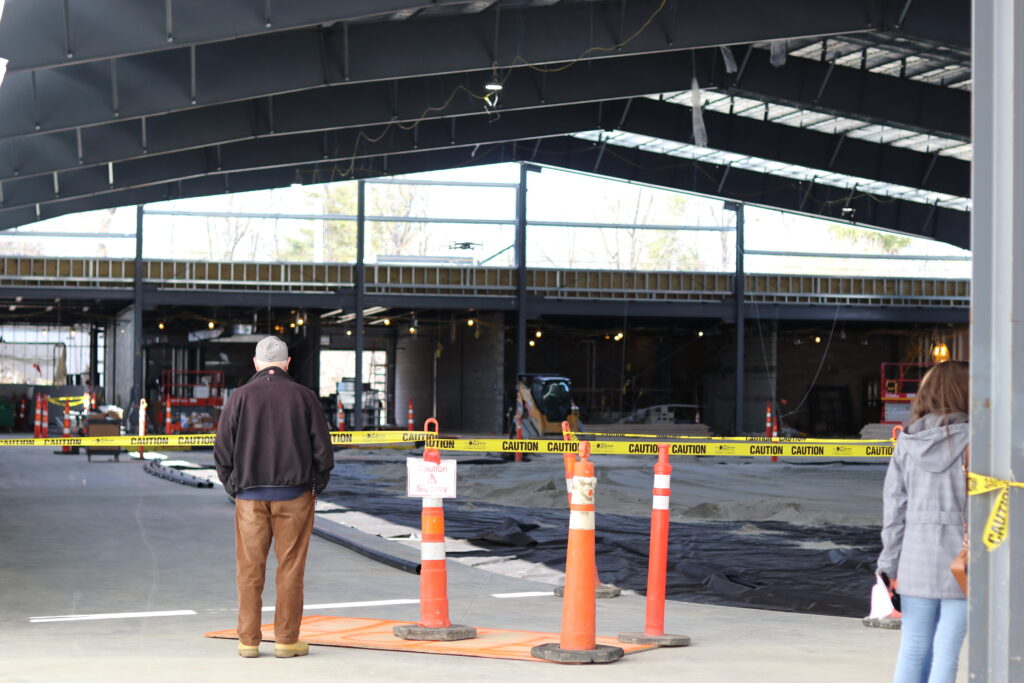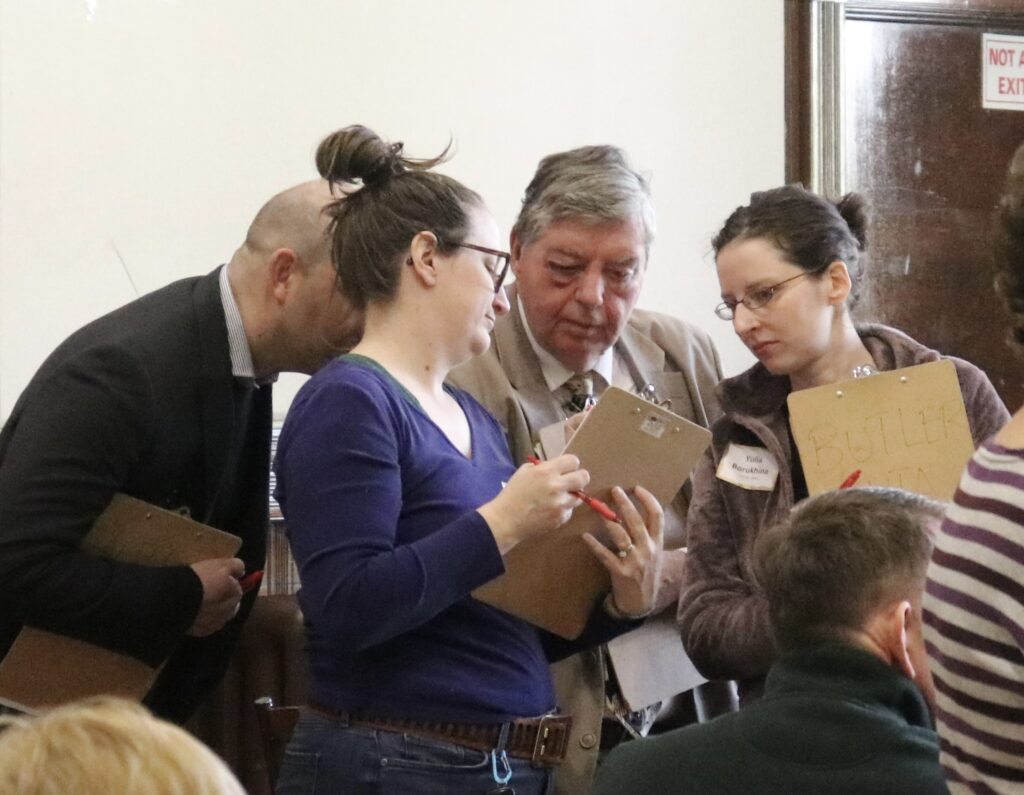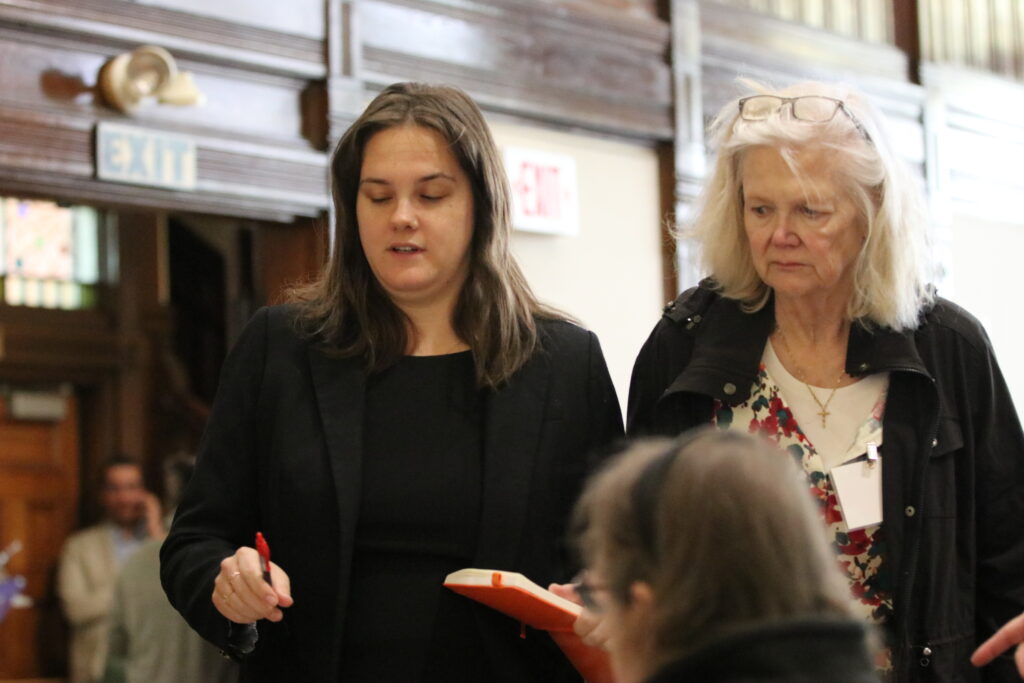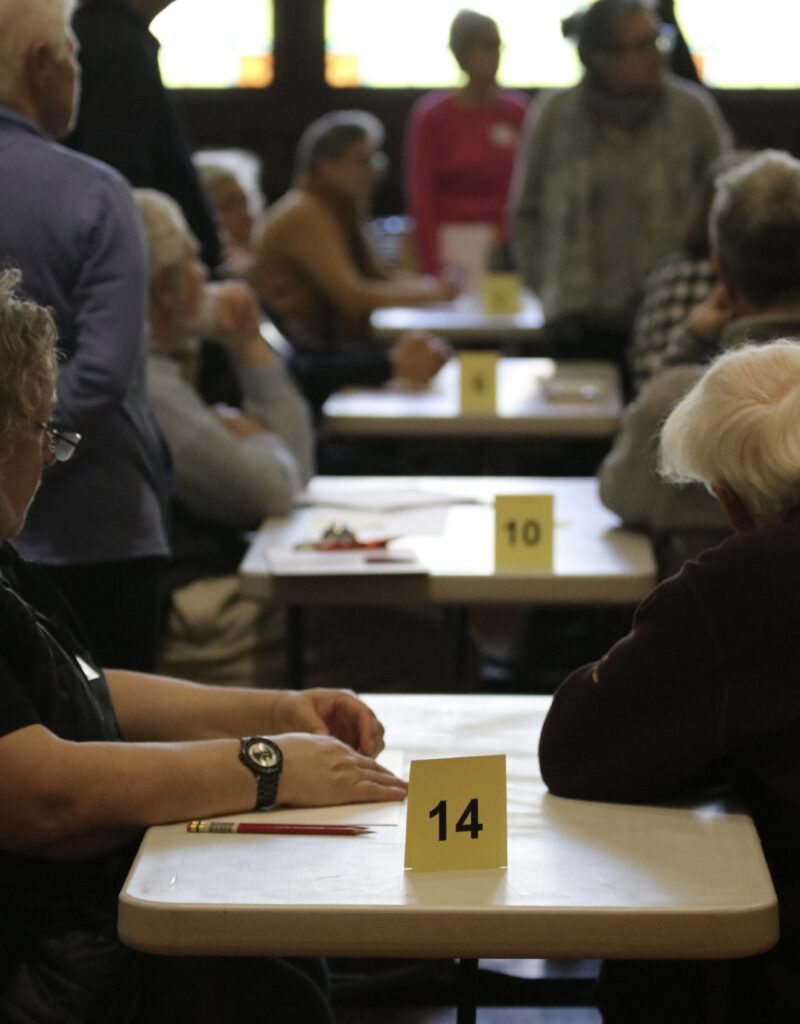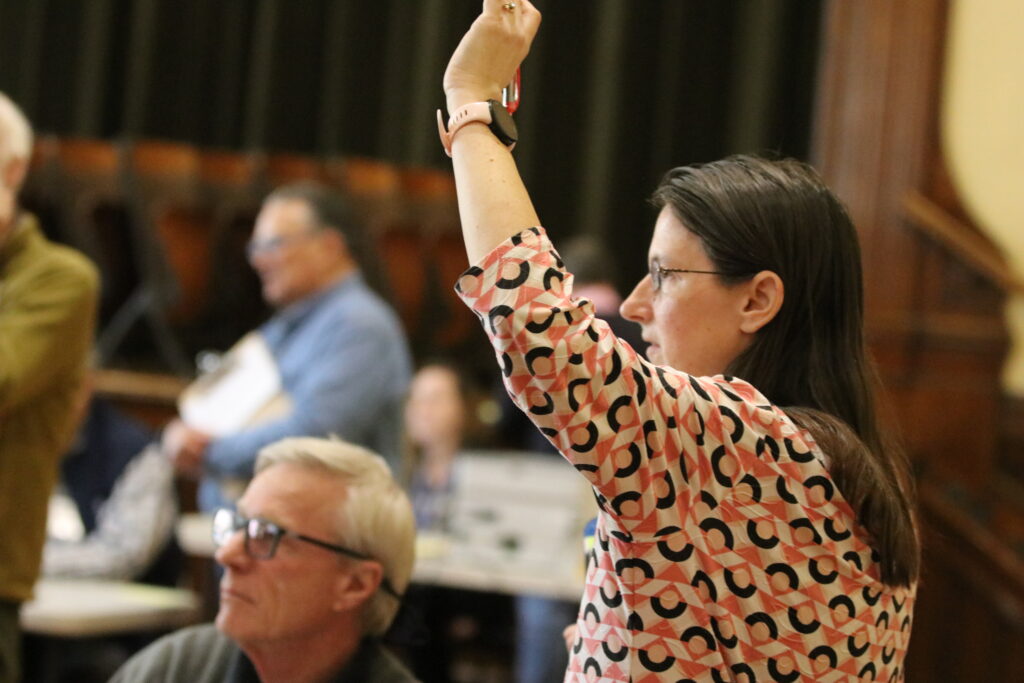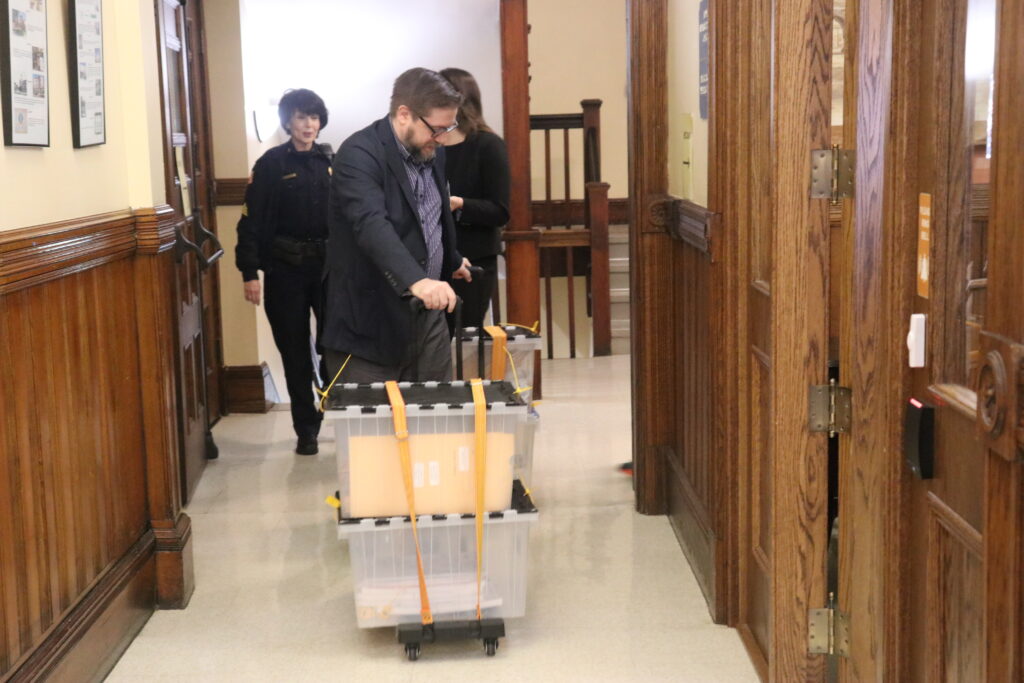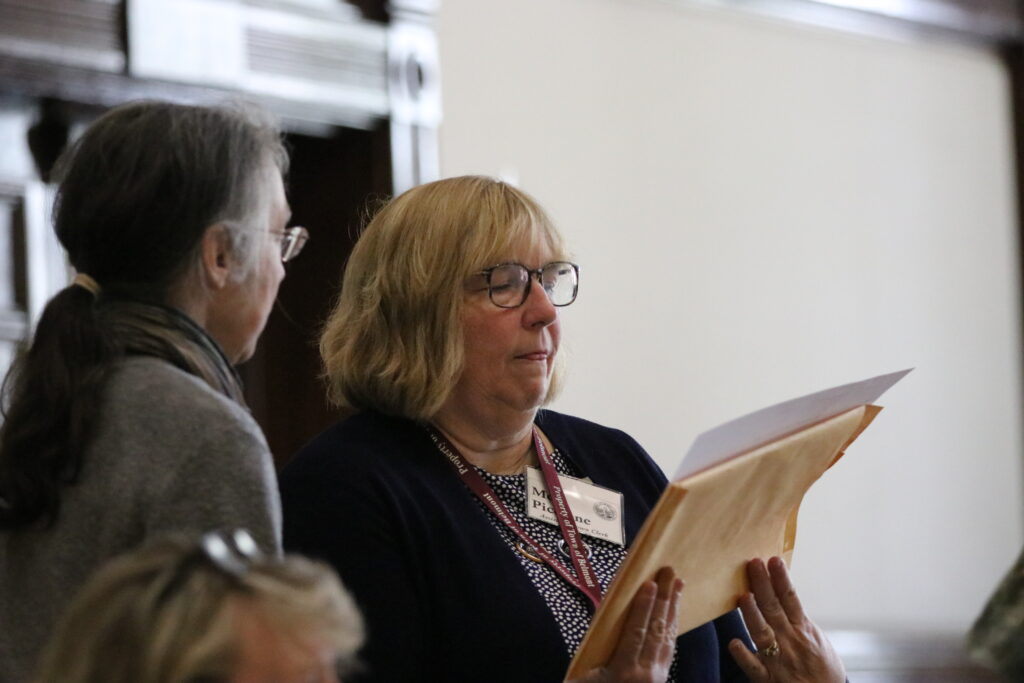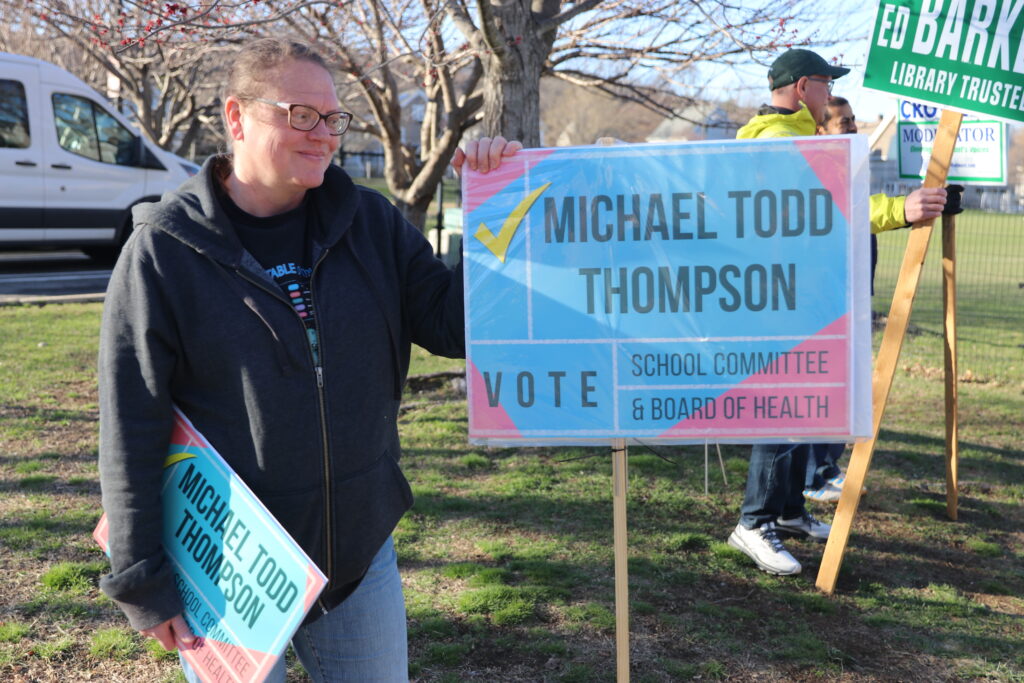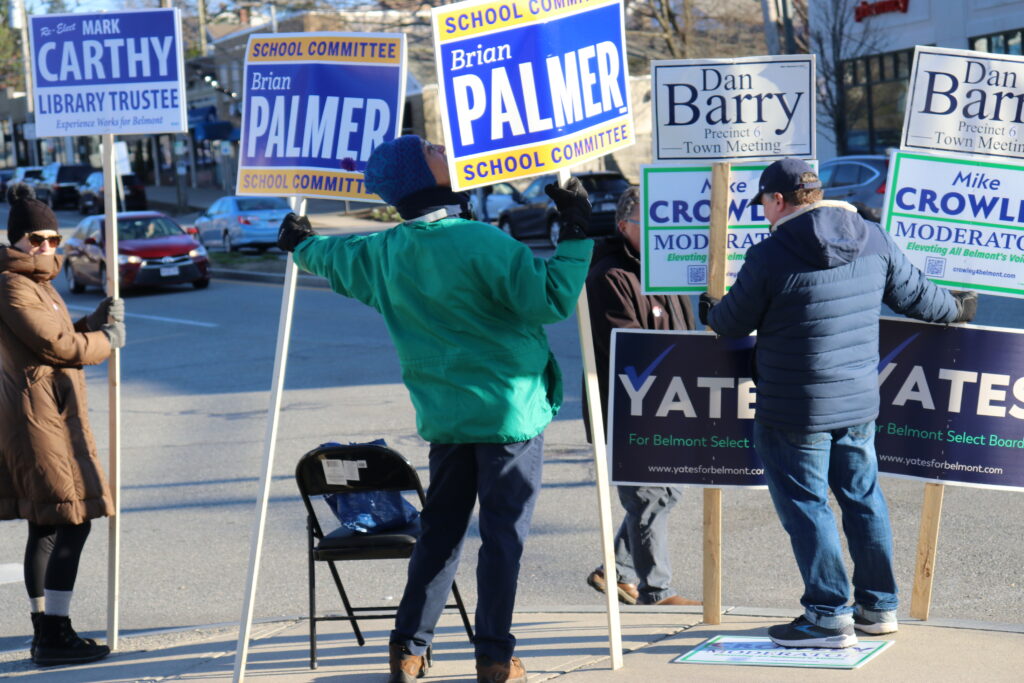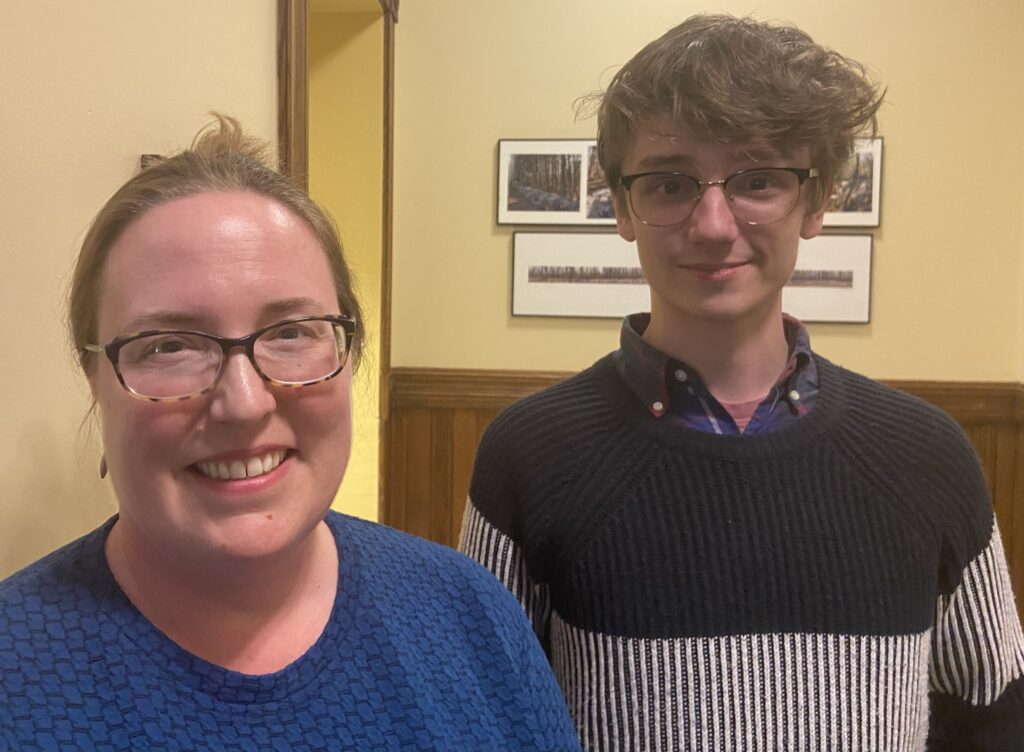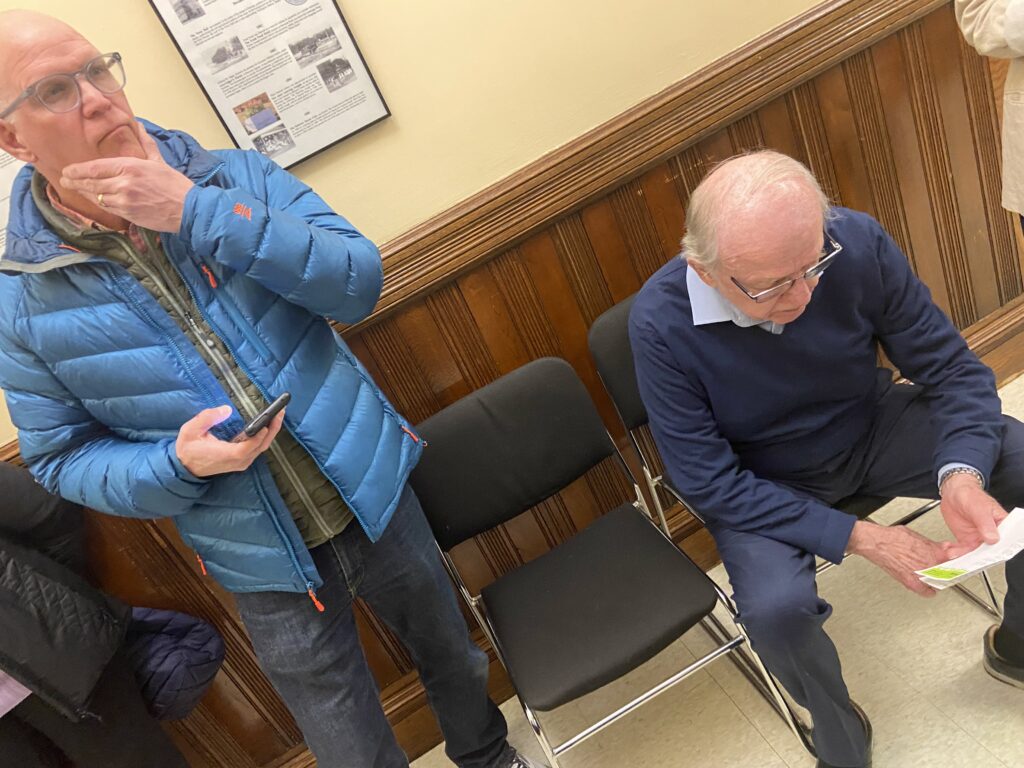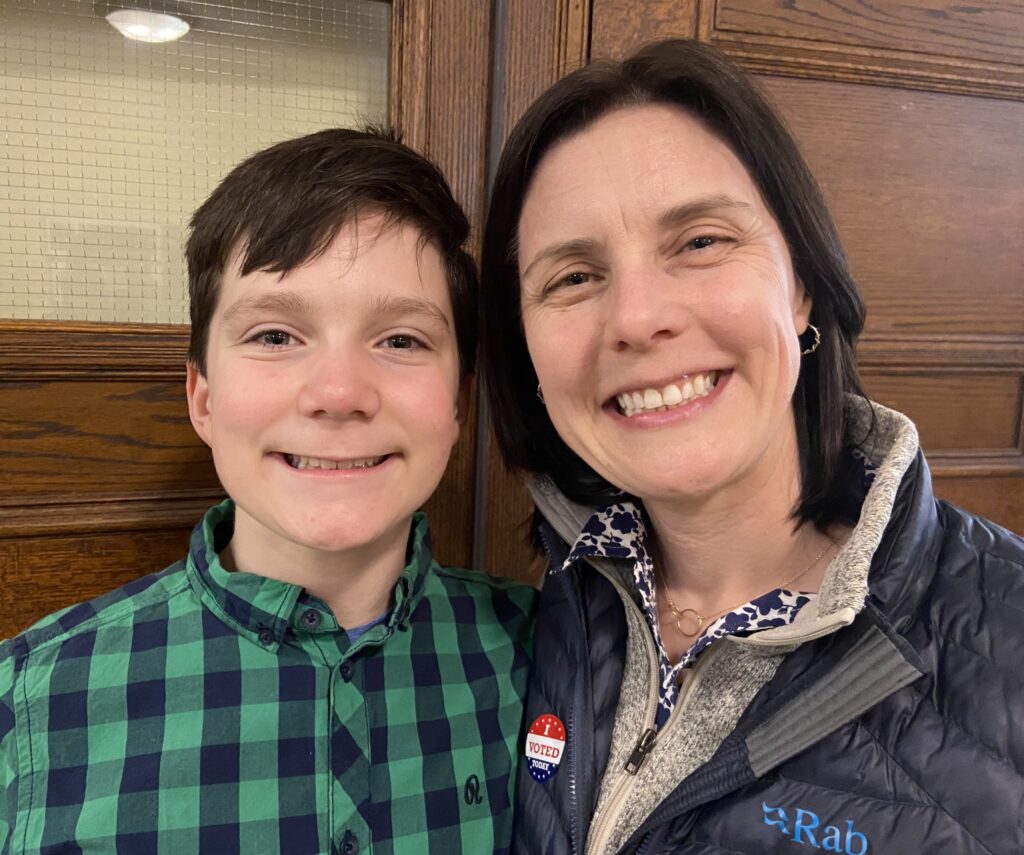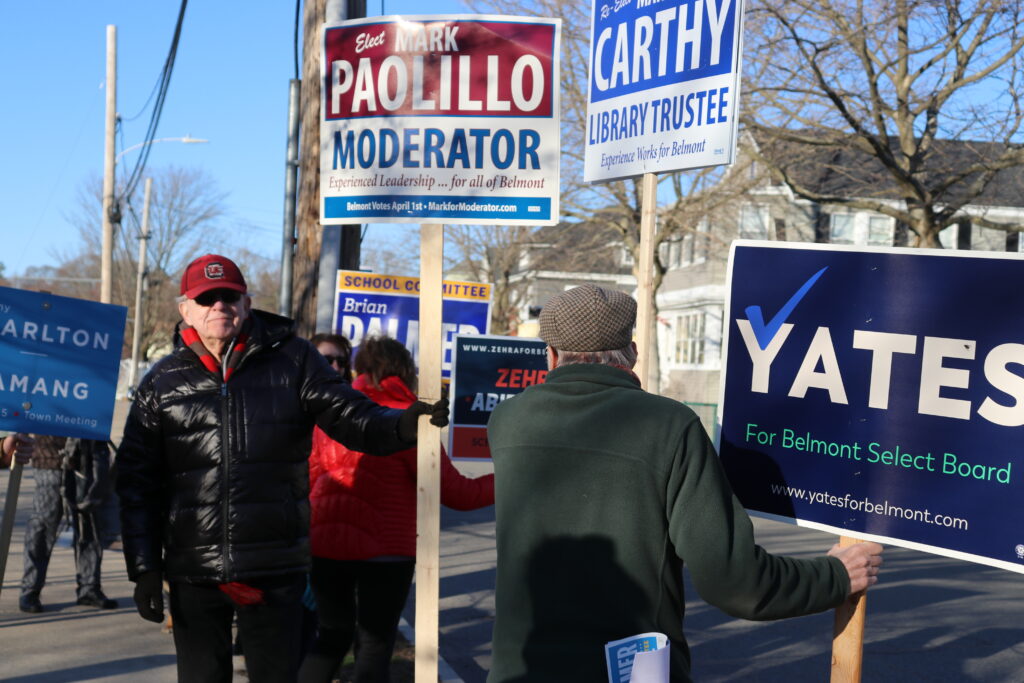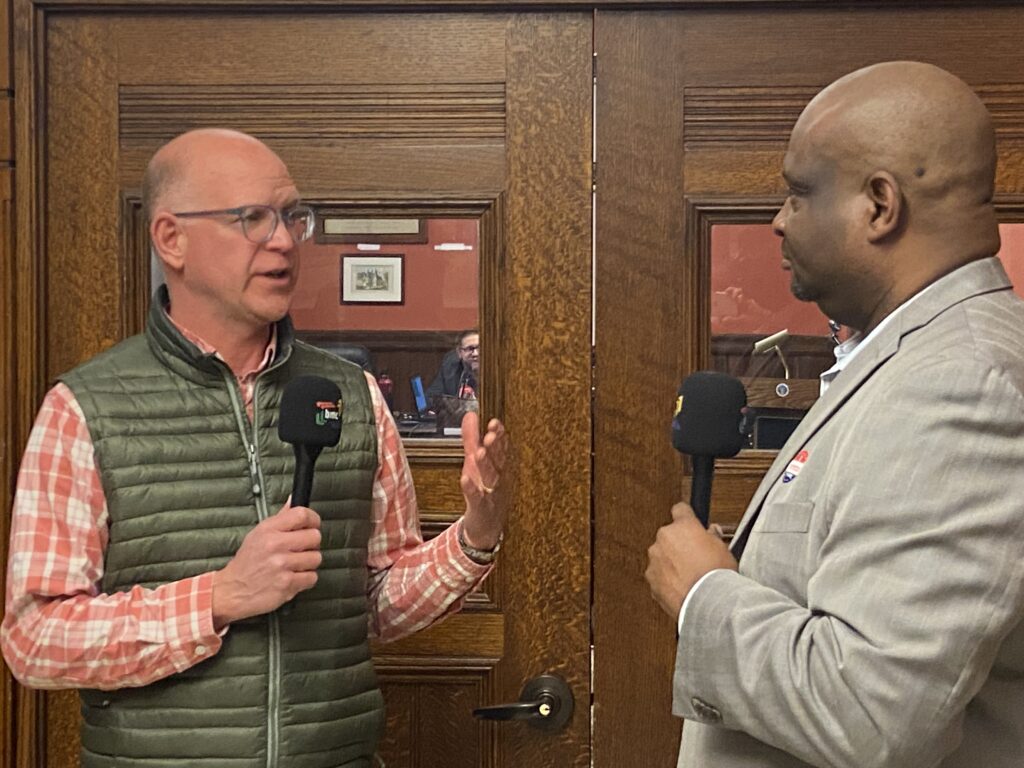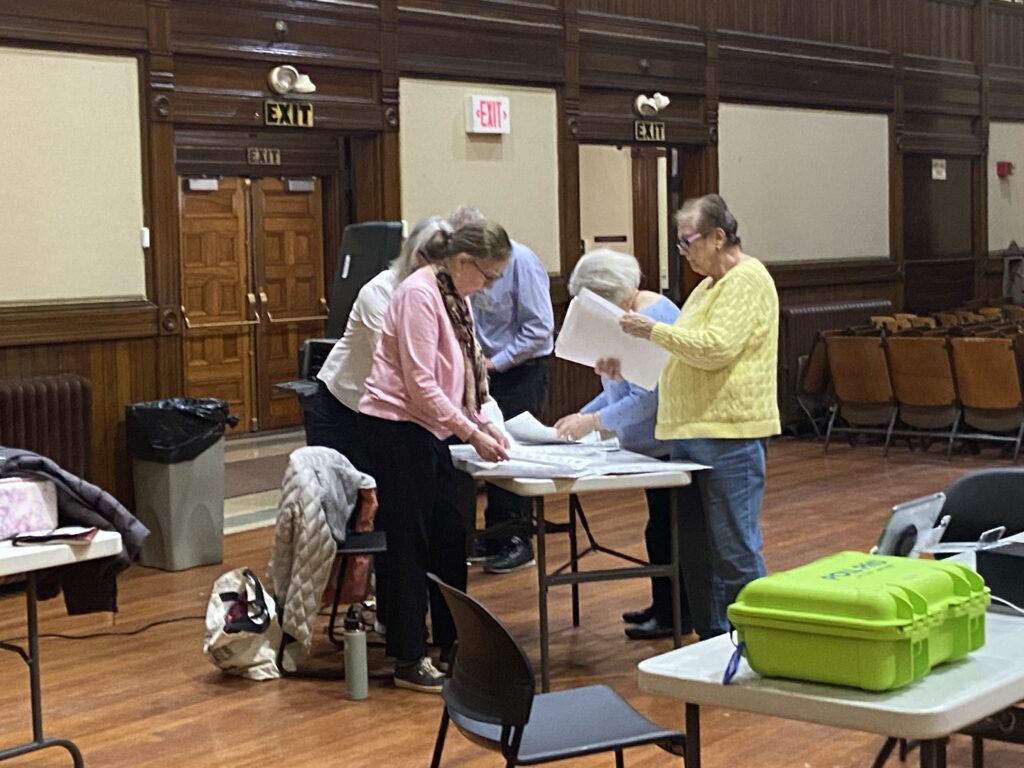Photo: Town Moderator Mike Crowley leads 2025 Town Meeting on first night of annual gathering
It’s a notice that no one had on their Town Meeting BINGO© card.
“We’re having technical difficulties. Town Meeting will resume shortly.”
That menacing message flashed on the big screen at the Belmont High School auditorium minutes after the start of the 2025 annual Town Meeting on Monday, May 5. Zoom dropped off, the sound system shut down to be replaced by an echo as electronic and internet gremlins played havoc with the town’s ambitious attempt at a hybrid meeting.
It was an inauspicious beginning for the first night of the annual gathering and for Mike Crowley‘s start as the Town’s Moderator. But Belmont Media’s Jeff Hansel and the town’s IT crowd chased the electronic elves off, and Crowley was finally able to have a successful—with a few hiccups, but nothing to remember—first night in charge of the Belmont Town Meeting.
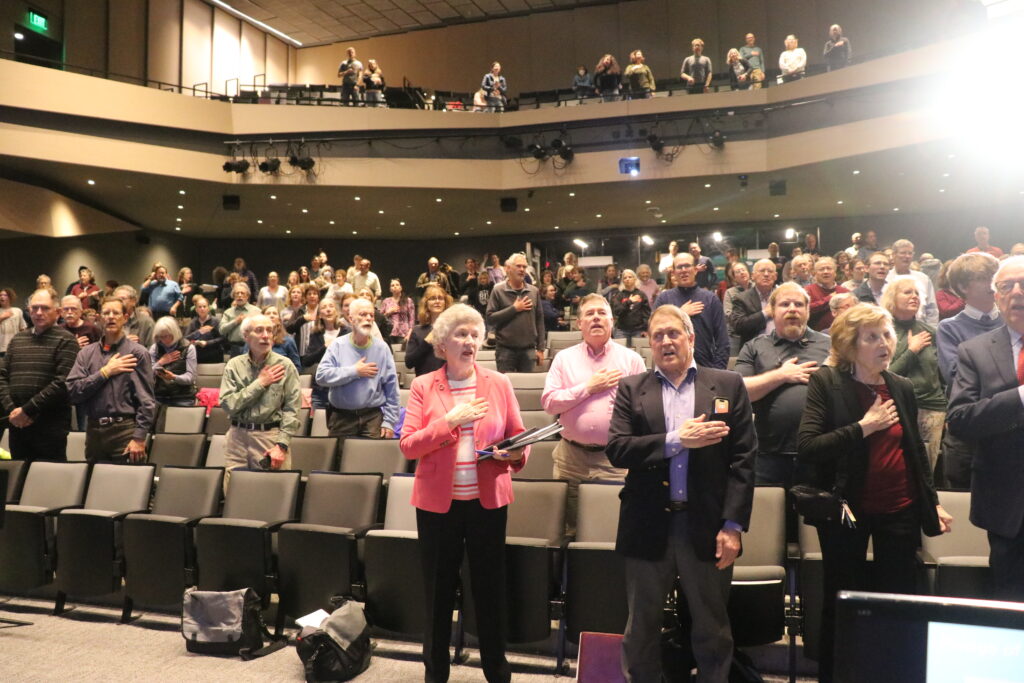
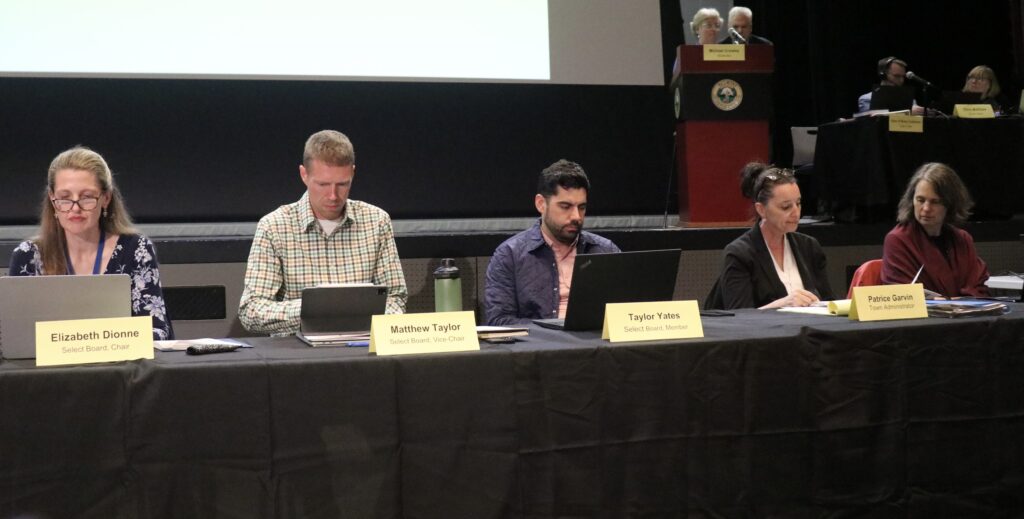
“[The delay] was a good thing for me,” said Crowley on Wednesday. “I was able to relax at the podium for those extra minutes, and it helped,” he said. He added that he appreciated having the Town Clerk’s staff and a slew of experienced town employees and elected officials to help guide the way.
Before the night’s business got underway, the Select Board presented a proclamation to the former moderator, Mike Widmer, for his 40 years of “extraordinary” public service including 17 years as moderator, a town meeting member and his contributions to state – a quarter century leading the Massachusetts Taxpayers Foundation – and local finance. Widmer told the meeting that while he was proud of what he accomplished, “but nothing good in life really gets done alone,” acknowledging the cooperation of town employees and committee members.
“I love democracy,” he said, returning to a favorite theme as moderator. Noting that 288 residents ran for Town Meeting, and come out to the annual gathering “is a marvelous thing for this town and this country that were built on this democratic experiment. So don’t take it lightly the fact that some of this become routine. And don’t take lightly the privilege of stepping to the microphone and being able to say what you feel without the fear of recrimination,” said Widmer, to a standing ovation.
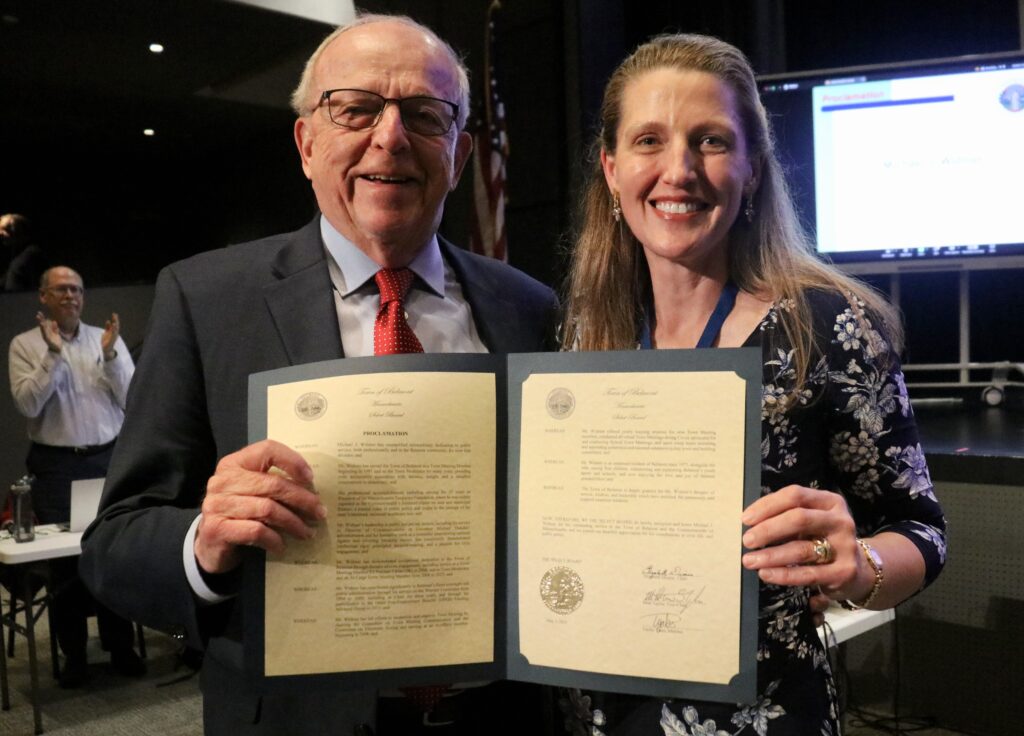

State of the Town: alot good, some not so
Elizabeth Dionne, Select Board chair, gave an unofficial ‘State of the Town’ address, with the familiar phrase as title: “The Best of Times, The Worst of Times.” On the best side of the ledger, “honest, competent local government” that allowed the town and schools to work collaboratively to produce a balanced budget that, for the first time, saw agreed-on spending limits. On the worst side, clouds loom over the fiscal year 2027 budget process, which will be a “more difficult” exercise.
Dionne highlighted Belmont’s commitment to meeting the recommendations of the 2022 Collins Center report, which pointed out the town’s financial challenges: hiring Jennifer Hewitt to the town’s newly created Financial Director’s post, an appointed treasurer, and a board of assessors, and starting a multi-year Budget Advisory Committee.
Dionne also praised the ramping up of the Information Technology Department under Chief Innovation Officer Chris McClure, a refocus on Planning and Economic Development to attract commercial and industrial activity, and the reorganization of the Community Services Department.

But while town continues to do more with less, “we have hit the outer limits of efficiencies on the municipal side,” as Belmont ratepayers are weighed down by “one of the state’s heaviest property tax burdens,” she said.
“Persuading voters to add to their already heavy tax burden will be an uphill battle, which means that we must demonstrate ongoing fiscal discipline before asking voters for another override,” said Dionne.
First Night: 800 Apples heading to the schools
Monday’s first night of Town Meeting saw Crowley complete more than half of the 20 articles in the warrant, many profunctory, such as elected officials’ salaries. Tomi Olsen (Precinct 6) did suggest Town Clerk Ellen Cushman receive a raise citing the office’s workload and professionalism.
Town Meeting approved two new revolving funds: for the new skating rink and solid waste management. Select Board Vice Chair Matt Taylor explained that the funds raised through fees would endure, and the money is used for specific activities; solid waste management would include mattress removal. Vince Stanton (Precinct 2) asked if the money in a revolving fund could be invested in, for example, money market securities to reap the benefit of increasing rates. Taylor responded, saying those funds work by taking in revenue and distributing it when needed over the year. Also, there are lots of governmental restrictions when investing town funds. (222-18-2)
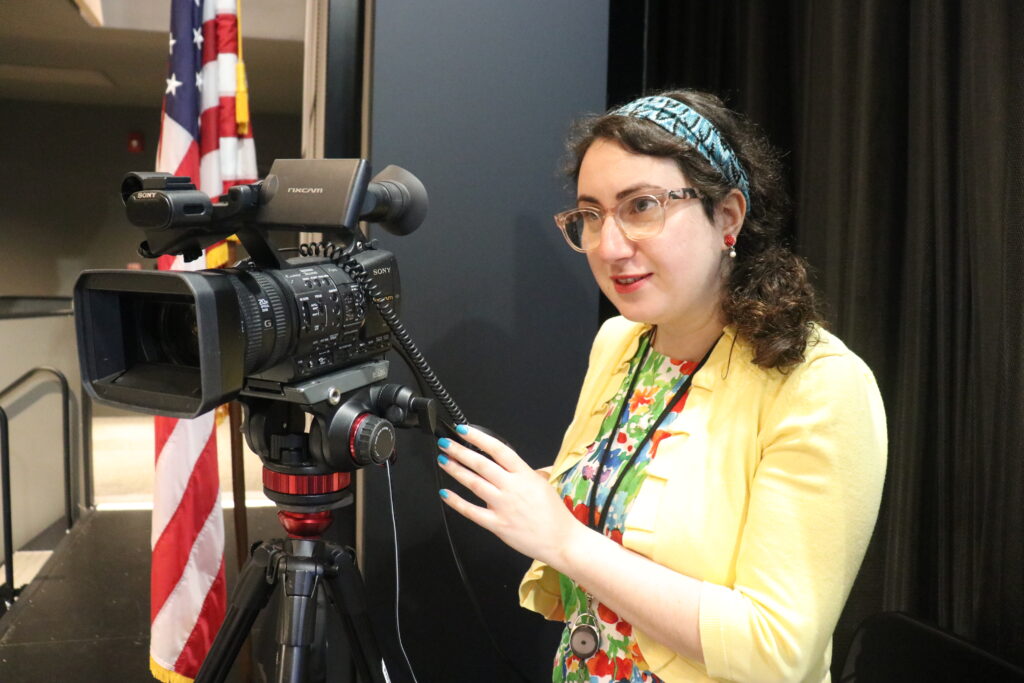
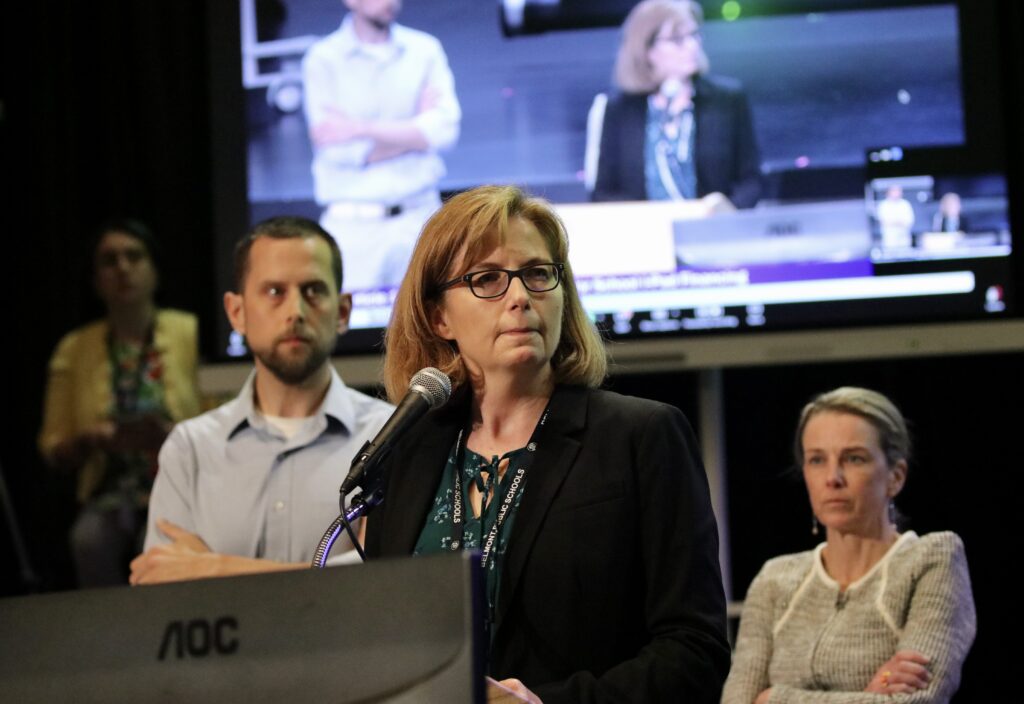
The meeting approved the School Committee’s four-year lease-to-own financing contract with Apple for 800 iPads for Belmont’s youngest students, replacing the current inventory that is coming to the end of its useful life. The contract came before Town Meeting as it had exceeded the state’s three-year limit for such agreements. The members responded positively – actual cheers – when it was revealed that the funds came from the school’s budget rather than another source, such as free cash. (231-3-0)
Finally, Town Meeting approved an article asking the state legislature to pass home rule legislation that will allow the town to ban second-generation anticoagulant rodenticides, better known as rat poison. Rodents partake of the toxic bait but, unfortunately, pass it on to the rat’s predators—like hawks, owls, and eagles—which kill them. The article passed 222-5-2.
Night Two: Roads? Yes, yes, yes, etc, etc
In a report to the Town Meeting, Library Building Committee Kathy Keohane told members that while the $39.5 million new library project is on budget with enough contingency funds to offset any foreseeable cost hikes, the project’s timeline for substantial completion has been pushed back a week to November 1.
“That puts us moving into the building in November and December, with the hope that we’ll have some targeted services open in the library in December with a brand new opening in January,” said Keohane. “We don’t want to compete with the holidays, so we’re going to wait for the quiet month of January and celebrate the heck out of that month.”
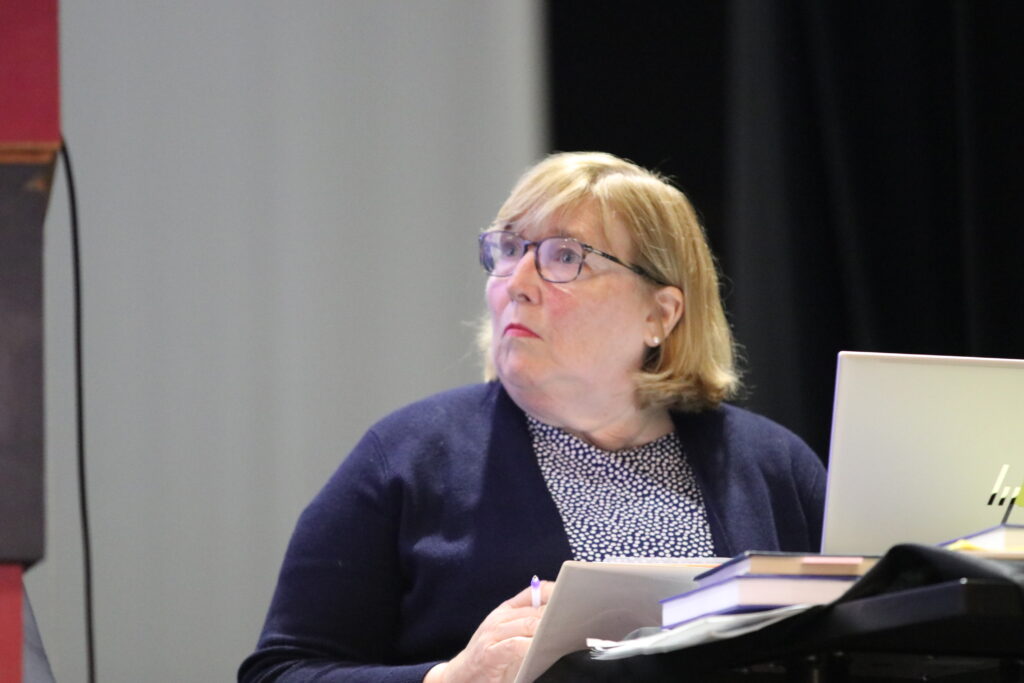
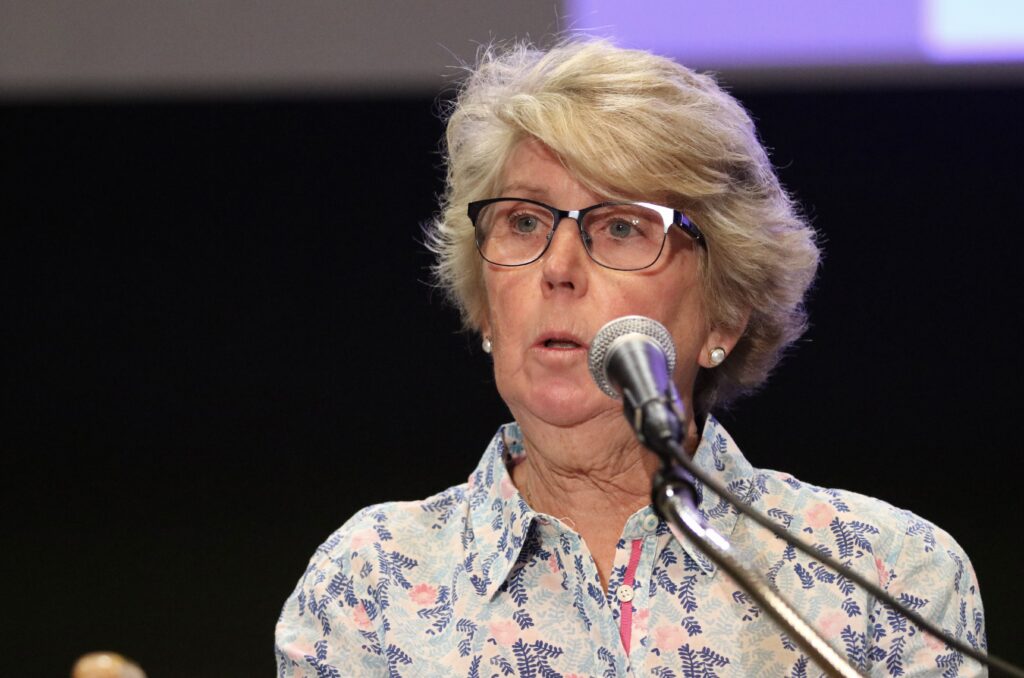
The articles
If you saw the final tallies on Wednesday night’s articles, you’d probably think you saw the results of some authoritarian dictatorship. For seven of the eight times it voted on either an article or appropriations, not a single Town Meeting Member cast a ‘no’ vote. In fact, one member voted against allowing Assistant Town Clerk Meg Piccioneto to substitute for Town Clerk Ellen Cushman, who couldn’t attend Wednesday. Go figure.
Want a surefire way to start a conversation in Belmont? Bring up roads and sidewalks. That’s what happened on Wednesday night as a line of members formed before the two microphones on the auditorium floor and on Zoom when the total appropriation of $2.513 million—$2 million for streets and $512,266 for sidewalks—was brought before the meeting. While the article was to appropriate funds, many members took the opportunity to express, once again, their frustrations with Belmont’s infamous roadways and sidewalks.
After being told by National Grid that two small gas leaks on her street had to be repaired before 2027 but the town scheduled road repairs in fiscal ’24, Corinne McCue Olmsted (Precinct 1) wondered if there was any coordination with the gas utility and the town so streets would not be dug up after the repair, Assistant Town Engineer Wayne Chouinard said while there is communication between the parties, sometimes the utility will miss a scheduled monthly meeting or something will fall through the cracks to create issues with ripping up the road.
“National Grid is the bane of my existence,” said DPW Director Jay Marcotte. While the town has a five-year moratorium on any work after a repair, it does not apply to the utility. “We can work with them with the best intentions to figure out how they can get in and do their gas work to repair leaks, they may not get around to it. It’s extremely frustrating on our end.”
Rosemary Burke (Precinct 2) told the meeting that $2.5 million is “nowhere near what this town needs to spend on roads and sidewalks.” She contends that “all the roads are a mess … and there isn’t anyone that lives anywhere here that doesn’t have a terrible street.”

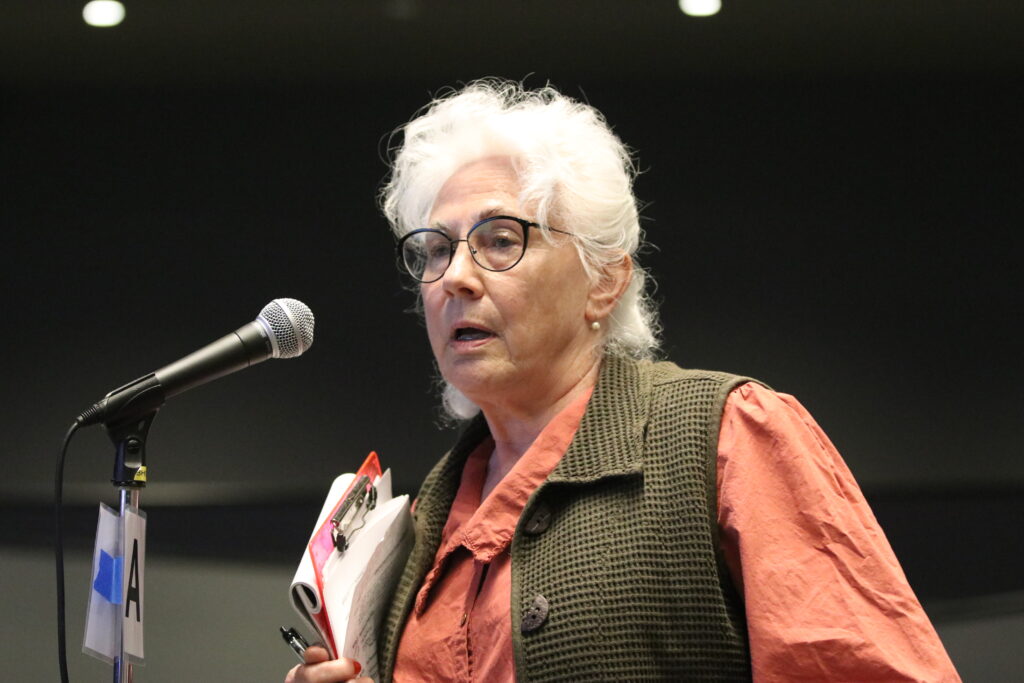
“What kind of plan will the town come up with … to more substantially address the town’s serious infrastructure problem?” Burke asked. Marcotte said his department works with consultants who rate the town’s roadways and prioritize those streets that fall below a set standard, basically selecting the worst of the lot.
Here’s a first for the Town Meeting: Emily Peterson called the question via Zoom. The appropriation passed 218-1-1
The answer: 157. Question: How many trees did the DPW plant in the past fiscal year? And that was nearly twice the average (80) of replacement trees placed throughout town, mainly on the green strips next to sidewalks, according to Marcotte. Town Meeting approved the Comprehensive Capital Budget Committee’s request of $35,000 for tree planting in FY ’25.
Article 3: Updating the 2004 Belmont Floodplan District zoning bylaw by modifying existing sections to meet new federal requirements and incorporating new definitions and use regulations. (233-0-0)
Article 12: Approve $3.1 million in funding for the water main replacement program. Now four decades on, the program has replaced 35.5 miles of the 39 miles of unlined steel water mains laid before 1929. Best part, a loan from the MWRA to do the work is interest free. (242-0-0).
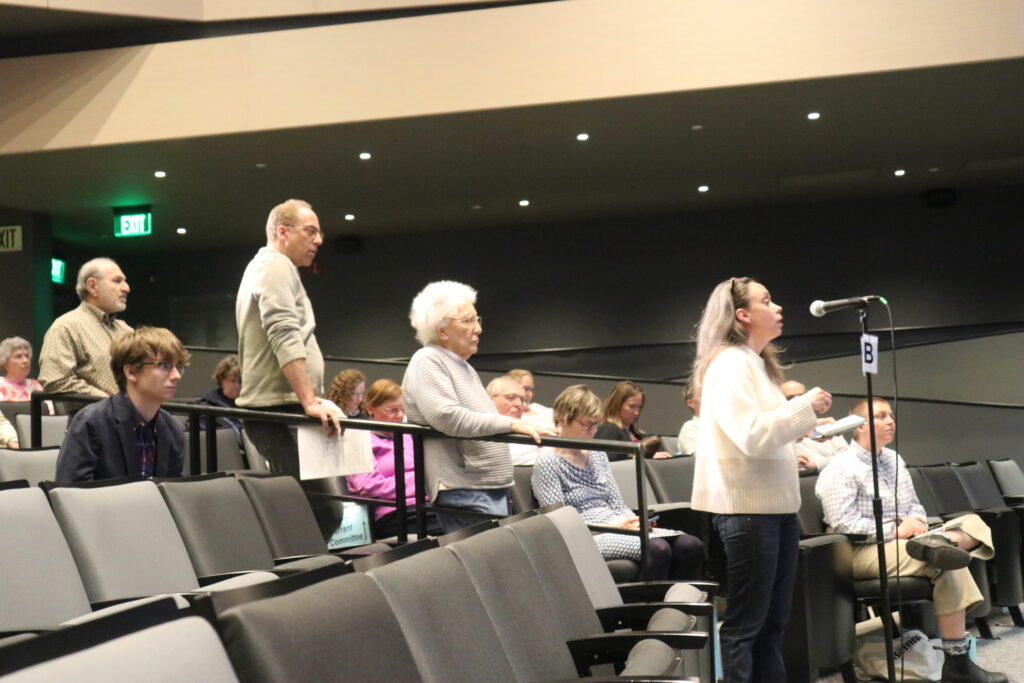
Article 18: The quarter-century-old roof of the Chenery Upper Elementary School needs to be replaced. The first part of the three-year plan is installing new HVAC systems for $3.7 million. Possible rebates, grants for updated heating and cooling equipment, and any remaining funds from this year’s work will go towards the $4.2 million to replace the roof in fiscal ’27. (207-0-1)
Article 17: Capital Expenditures, totaling $668,000, included:
- Council on Aging: An accessible van at $75,000. (216-0-0)
- DPW: Tree planting and purchasing a dump truck for $135,000. (239-0-1)
- Fire Department: $118,000 towards a $545,000 new ambulance, $90,000 for breathing apparatus (239-0-1)
- $250,000 in Information Technology infrastructure upgrades and cables (213-0-0)
Town Meet will reconvene at 7 p.m., Monday, May 12 at the Belmont High School auditorium.
